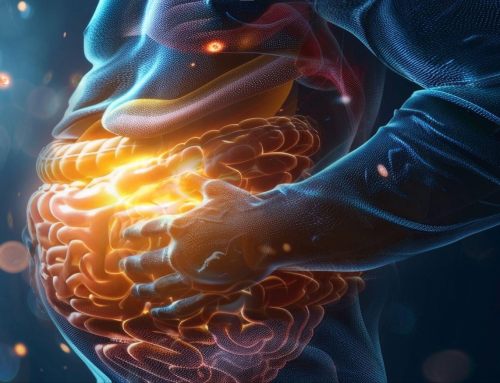DNA Methylation – Examples of Epigenetic Effects Upon the Immune System
DNA methylation has an interesting role in the immune system. Through DNA methylation, the expression of genes can be altered without altering the underlying genetic code, so is considered epigenetic, and yet these “temporary” or reversible changes are heritable in some cases. This mechanism is seen throughout the maturation of parts of the adaptive immune system, playing a role in immune cell differentiation and silencing of underlying genes.
Errors can occur in this mechanism, so DNA methylation has been probed as a potential root cause for autoimmune disorders and other health conditions. Researchers are seeking a connection between the environment and genes concerning disease development because environmental factors such as diet and lifestyle have been shown to affect DNA methylation, and DNA methylation can be involved in disease states. The sites where DNA methylation occurs are also interesting because they lend themselves to intervention by pharmaceuticals, backing off these epigenetic changes or causing them to occur.
The Basics of DNA Methylation
In eukaryotes, DNA methylation is the process of adding a methyl group, consisting of one carbon and three atoms of hydrogen, to the fifth carbon of a cytosine base, making it 5-methylcytosine. (In prokaryotes, DNA methylation tends to gravitate to adenosine, making methyladenosine, though it can occur in eukaryotes as well (1)). In mammals, DNA methylation typically occurs at CpG sites, where guanine and cytosine are separated by a phosphate group on the same strand of DNA.
The addition of 5-methylcytosine can regulate gene transcription, repressing it, silencing the expression without changing the underlying DNA sequence. An enzyme performs the action of adding the methyl group and is known as DNA methyltransferase (DNMT). There are multiple types of methyltransferases which are grouped and numbered according to their characteristics (DNMT1, DNMT2, and DNMT3).
DNA methylations convey through many cell divisions and play a role in aging and tumor formation (by inhibiting tumor suppressor genes) (2), guiding immune cell subsets (3), regulating genes, memory, imprinting, and many other roles (4).
A multitude of events can influence DNA methylation – exposure to medications or drugs, toxins in the environment such as radiation or pollution, or even cigarettes. Indeed, lifestyle factors such as diet, exercise, or stress can have an effect on DNA methylation. Viral or bacterial infections can also come into play (5). A dearth of S-adenosyl methionine (SAM) can restrict the amount of DNA methylation that occurs due to its role as a methyl donor.
Demethylation: Can we back this change out?
DNA demethylation can occur naturally, passively during replication, or actively (not dependent upon replication). Demethylation is performed by a set of enzymes called “Ten-eleven translocation” (TET) demethylases. Demethylation completes a cycle with DNA methylation. Methylation of the cytosine by the DNMT enzyme creates 5-methylcytosine, then the TET enzymes keep conversions going: 5-hydroxymethylcytosine to 5-formylcystosine, to 5-carboxylcytosine, and back to cytosine.
Yet, the changes created by DNA methylation and demethylation are potentially reversible by pharmaceuticals as well. The mechanisms of DNA methylation and demethylation can be effectively disrupted and reversed, in part because they are not changing the underlying DNA code (which is difficult to change once established). Instead, enzymes are used to help alter genetic expression. The use of enzymes makes these epigenetic mechanisms an easy target for experimentation with pharmaceutical interventions that disrupt the enzyme’s actions (6).
High Level Look at DNA Methylation in Adaptive Immunity
DNA methylation is known to affect both T and B immune cells involved in the adaptive immune response of most vertebrates. Both B and T cells are types of lymphocytes (white blood cells found in the lymph fluid) generated by hematopoietic stem cells, which are stem cells found in the bone marrow that generate varieties of blood cells.
There are different types of T cells, distinguished by their surface proteins named by their “cluster of differentiation,” or “CD” (7). “CD4+” cells are also known as “T helper cells” (Th). They help other immune cells by releasing cytokines, which are specialized proteins or glycoproteins that interact with receptors on antigens in allergic or immune responses, directing the immune system to attack it. “Killer T cells” are also known as “CD8+” cells and are cytotoxic, directly able to kill by binding to the infected cell and releasing cytotoxins into it (8).
In regards to development, both B and T cells start life in the bone marrow. The B cells leave the marrow and start circulating in the periphery, but the T cells migrate to the thymus for additional maturation (9).
T Cell Maturation and DNA Methylation
Once the immature T cells arrive in the thymus, they are called “thymocytes” and are considered double-negative (DN) cells because they are not expressing either the CD4 or CD8 co-receptors on their surfaces. However, they will have T cell receptors (TCRs) for antigens, and those that have TCRs for peptide major histocompatibility (MHC) class I will develop into CD8+, and those with TCRs for MHC class II will develop into CD4+.
In fact, four distinct phases of development occur between the DN and double positive (DP) stages. The CD4 and CD8 are up-regulated to the DP state and then “test” for MHC class I or II. Cells that test as MHC class I down-regulate CD4 and become one lineage (cytotoxic / CD8), while those that test as MHC class II keep expressing CD4 while losing CD8 expression and become another lineage (helper / CD4) (3).
It is fascinating that the Cd4 locus has states that are heritable – an active state and a silencing state. In regards to the silencing state, a 434 bp cis-acting silencer, dubbed “S4” was identified by both in vivo and in vitro studies using T cell culture assays. S4 was “required for reversible silencing before the DP stage of development” and appeared to be needed in mature CD8+ cells for silencing CD4 (3). However, it was soon discovered that while S4 was required for initiating the silencing, its presence wasn’t needed for maintenance, so continued Cd4 silencing had to be occurring epigenetically and acting independently from S4 because the suppression of re-expressing Cd4 after each round of cell division would have to be preserved by passing the silenced state to daughter cells. As a result of careful screening, the DNA methyltransferase I enzyme (DNMT1) was discovered to be the agent assisting the Cd4 silencing after cell division. This discovery led to analyzing the DNA methylation across the whole locus, which showed that (compared to CD4+ cells) hyper-methylation was occurring in the beginning and end states of T cell development (the double negative and double positive states) as well as in mature CD8+ cells (3). This makes sense for CD8+ because it is silencing its CD4.
B Cell Maturation and DNA Methylation
B cells develop in the bone marrow and are “activated” elsewhere. They start from the same progenitor cells as the T cells in the bone marrow but become “pro-B” cells that express Igα and Igβ (types of immunoglobulins). Eventually, different types of surface proteins emerge, and “naive” B cells leave the bone marrow with B cell receptors that can recognize antigens, and which contain IgD and IgM antibodies that can be secreted or live in the plasma membrane as part of the receptor site. When it binds to an antigen at the receptor site, the antibody response is triggered.
B cells are activated in “secondary lymphoid organs” (SLO), lymph nodes, or the spleen. Activation is a process where the end result is a lowered threshold for an immune response. Antigens are required for activation, and two different paths of activation can occur depending on the composition of the antigen. One pathway of activation is dependent on T cells, the other is independent of T cells.
In the T cell-dependent pathway, the antigen is brought inside the B cell (if it is a match for its receptors), where it is processed and creates MHC complexes for presentation to T cells. A T cell can then bind to the MHC and antigen complex, which causes it to release cytokines. It is the T cell cytokines that “activate” the B cell, causing the B cell to create either an activated plasma daughter cell or an inactive memory daughter cell. Plasma cells can then secrete antibodies as an immune system defense mechanism, but only the type of antigen it originally encountered, and these are typically short-lived. The memory B cells created this way can live for years and typically have a faster response the next time they encounter the same antigen. Upon this second exposure to the antigen, they divide again, creating plasma cells.
The T cell-independent path for activation is done via antigens that cause B cell division resulting in daughter cells that are clones of the parent, which are only able to create IgM antibodies (10). No T cells are needed, but steps are needed for activation, such as interaction with toll-like receptors (TLRs) or bacterial cells.
DNA methylation occurs both during the development of germinal centers of B cells and in B memory cells. Germinal centers (GC) of B cells are a “highly specialized micro-environment” where B cells acquire their specific antibodies (and cloning occurs) during multiple rounds of somatic hypermutation (SHM) and selection (11).
The Connection between DNA Methylation and Different Conditions
An obvious disease to focus on in regards to problems with DNA methylation, or epigenetics in general, is autoimmunity. In an immune system designed to distinguish self from foreign matter to protect itself from foreign invaders, the most egregious error would be seeing a part of itself as a foreign invader. Because DNA methylation is intricately involved in immune cell differentiation, practically any aberration could end in an increased risk for autoimmune diseases.
Type I Diabetes and DNA Methylation
Type I Diabetes (T1D) is the insulin-dependent variety of diabetes which is also known as “juvenile-onset diabetes.” This type of diabetes is characterized by the loss of β cells in the pancreas due to the immune system mistakenly targeting it. The pancreas β cells make and secrete the hormone insulin for lowering blood sugar levels. Note, the β cells can be compromised by both genetic and non-genetic factors (12). Monoclonal zygote twins, which have no genetic differences, were found to have 132 T1D “methylation variable positions” (T1D-MVPs), which are practically equivalent to CpG sites, giving evidence of epigenetic involvement through DNA methylation. Several of the methylation variable positions (MVPs) identified had already been associated with diabetes, such as the MVP associated with the TNF cytokine. Furthermore, some of the MVPs were discovered to have been changed even before the official diagnosis of Type 1 Diabetes and could serve as a marker for early detection (5).
Graves Disease and DNA Methylation
DNA methylation has long been suspected as a player in autoimmune thyroid diseases such as Graves Disease, which results in an over-functioning (hyper) thyroid, and Hashimoto’s Thyroiditis, which results in an under-functioning (hypo) thyroid. DNA methylation analysis of patients with Graves Disease found close to 260 hypermethylated and hypomethylated regions combined. As in the case with Type 1 Diabetes, suspect genes were also identified that had already been associated with the development of Graves Disease, and which are DNA methylation-regulated.
A = B, B = C, Does A = C?
It is known that diet, lifestyle, and environmental toxins can affect DNA methylation. Additionally, it is known that DNA methylation is heavily involved in creating some disease states, or at least setting the stage for them. The question remaining is, how well can the effects of diet, lifestyle, and environmental toxins be confirmed as root causes for disease states, with DNA methylation being the mechanism by which it is accomplished? In regards to Type 1 Diabetes, one study states plainly, “To date, the effects of the metabolome and DNA methylation have been studied separately in T1D; thus, the combined nutrigenomics of T1D remain unclear (13).” There has been some luck, however, with connecting bioactive food components with DNA methylation and its effect on cancer tumor formation (14). Even more fortuitous would be the development of pharmaceuticals that alter DNA methylation and demethylation enzymes, correcting the negative effects of diet, lifestyle, or environmental toxins.
Sources:
- Wu K-J. The epigenetic roles of DNA N6-methyladenine (6MA) modification in Eukaryotes [Internet]. Cancer Letters. Elsevier; 2020 [cited 2022Sep25].
- CPG Island [Internet]. Oxford Reference. [cited 2022Sep25].
- Sellars M, Huh JR, Day K, Issuree PD, Galan C, Gobeil S, Absher D, Green MR, Littman DR. Regulation of DNA methylation dictates Cd4 expression during the development of helper and cytotoxic T cell lineages. Nat Immunol. 2015 Jul;16(7):746-54. doi: 10.1038/ni.3198. Epub 2015 Jun 1. PMID: 26030024; PMCID: PMC4474743.
- Luo GZ, Blanco MA, Greer EL, He C, Shi Y. DNA N(6)-methyladenine: a new epigenetic mark in eukaryotes? Nat Rev Mol Cell Biol. 2015 Dec;16(12):705-10. doi: 10.1038/nrm4076. Epub 2015 Oct 28. PMID: 26507168; PMCID: PMC4763336.
- Li J, Li L, Wang Y, Huang G, Li X, Xie Z, et al. Insights into the role of DNA methylation in immune cell development and autoimmune disease [Internet]. Frontiers. Frontiers; 1AD [cited 2022Sep25].
- Zhang L, Lu Q, Chang C. Epigenetics in health and disease [Internet]. SpringerLink. Springer Singapore; 1970 [cited 2022Sep25]. Available from: https://link.springer.com/chapter/10.1007/978-981-15-3449-2_1
- Human CD markers chart [Internet]. Abcam. 2022 [cited 2022Sep25].
- T cells immunophenotyping [Internet]. Abcam. 2022 [cited 2022Sep25]. Available from: https://www.abcam.com/primary-antibodies/t-cells-basic-immunophenotyping
- Thapa P, Farber DL. The role of the thymus in the immune response [Internet]. Thoracic surgery clinics. U.S. National Library of Medicine; 2019 [cited 2022Sep25].
- Knapp S. B cells (B lymphocytes) – the definitive guide [Internet]. Biology Dictionary. 2020 [cited 2022Sep25]. Available from: https://biologydictionary.net/b-cells/%C2%A0
- Young C, Brink R. The Unique Biology of Germinal Center B Cells [Internet]. Immunity. Elsevier; 2021 [cited 2022Sep25].
- Klak M, Gomółka M, Kowalska P, Cichoń J, Ambrożkiewicz F, Serwańska-Świętek M, et al. Type 1 diabetes: Genes associated with disease development [Internet]. Central European Journal of Immunology. Termedia; 2021 [cited 2022Sep25]. Available from: https://www.termedia.pl/Type-1-diabetes-genes-associated-with-disease-development,10,43203,1,1.html
- Vigers T, Vanderlinden LA, Johnson RK, Carry PM, Yang I, DeFelice BC, Kaizer AM, Pyle L, Rewers M, Fiehn O, Norris JM, Kechris K. A Mediation Approach to Discovering Causal Relationships between the Metabolome and DNA Methylation in Type 1 Diabetes. Metabolites. 2021 Aug 14;11(8):542. doi: 10.3390/metabo11080542. PMID: 34436483; PMCID: PMC8399445.
- Ross SA. Diet and DNA methylation interactions in cancer prevention. Ann N Y Acad Sci. 2003 Mar;983:197-207. doi: 10.1111/j.1749-6632.2003.tb05974.x. PMID: 12724224.












